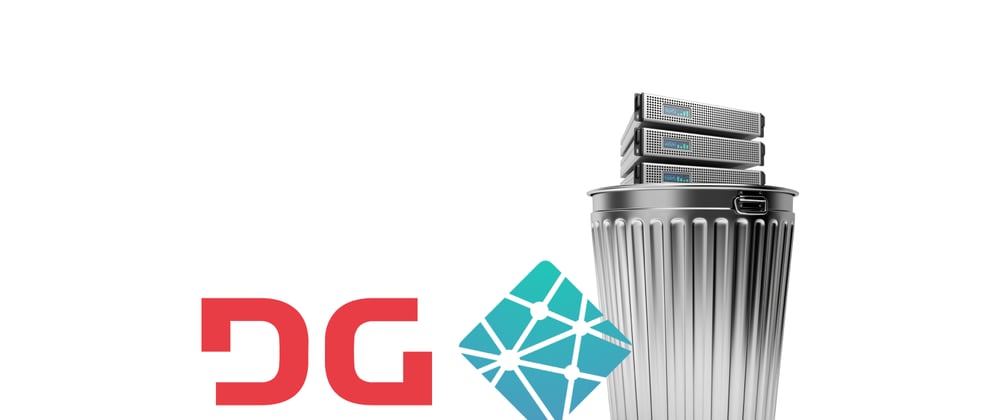Traditional server applications typically need to be always on, always using resources and require maintenance to ensure availability. Serverless works differently - functionality is exposed via URLs. When a request is made they spin up, execute logic, and spin back down. Each serverless script (known as a 'function') can be run many times in parallel, so this approach may be suitable for scale, dependent on your use case.
In this tutorial, you will set up serverless functions with Netlify to get transcripts using Deepgram's Node.js SDK - one for hosted files, and one for local files. Because serverless functions do not lend themselves to long-living scripts, it's not recommended to use this approach for live transcription.
Before We Start
You will need:
- Node.js installed on your machine - download it here.
- A Deepgram API Key - get one here.
- The Netlify CLI installed - get started guide here. Also, make sure to log in.
Create a new directory and navigate to it with your terminal. Run npm init -y to create a package.json file and then install the Deepgram Node.js SDK:
npm install @deepgram/sdk
Set Up Netlify Project
You can set up a Netlify project from the web dashboard, but as we need the Netlify CLI to test our functions, we may as well use it here. Inside of your project directory, run netlify init, and when prompted, choose Create and deploy site manually.
A new project will now be visible in your Netlify web dashboard - you can open it with netlify open.
Your First Netlify Function
Netlify offer zero-configuration serverless functions if you put your logic in a specific directory - /netlify/functions. Create a new file at /netlify/functions/hello.js and populate it with the following:
exports.handler = async event => {
try {
// Any logic goes here, but we'll return a fixed response
return { statusCode: 200, body: JSON.stringify({ message: 'ok' }) }
} catch (err) {
return { statusCode: 500, body: String(err) }
}
}
Test Your Function
Run netlify dev and wait for the local server to start - usually at http://localhost:8888. Open another terminal and run the following command to see the response:
curl http://localhost:8888/.netlify/functions/hello
Don't be alarmed by the . in the URL - your local directory, which contains your functions, should just be /netlify
Your terminal should look something like this:
Adding Your Deepgram API Key
Like most hosting providers, Netlify provides a way to set sensitive keys as environment variables. Netlify CLI will inject any variables from your web dashboard to your local runtime for you - super cool.
Open your project dashboard with netlify open while in your project directory. Heard to Site settings > Build & deploy > Environment > Environment variables and create a new variable called DEEPGRAM_API_KEY with the value from the Deepgram Console.
If you are still running your netlify dev server, stop it with ctrl + c and restart it. You should see the key being injected,meaning it is now available with process.env.DEEPGRAM_API_KEY
Transcribe Hosted Files
Inside of your functions directory, create hosted.js with the following content:
const { Deepgram } = require('@deepgram/sdk')
const deepgram = new Deepgram(process.env.DEEPGRAM_API_KEY)
exports.handler = async event => {
try {
const { url } = JSON.parse(event.body)
const { results } = await deepgram.transcription.preRecorded({ url })
return { statusCode: 200, body: JSON.stringify(results) }
} catch (err) {
return { statusCode: 500, body: String(err) }
}
}
Once you save the file, the new URL is immediately available. This function requires a data payload with a url property. You can test it by once again using cURL:
curl -X POST -H "Content-Type: application/json" -d '{"url": "https://static.deepgram.com/examples/nasa-spacewalk-interview.wav"}' http://localhost:8888/.netlify/functions/hosted
Accessing Functions From The Web
Netlify makes your functions available on the same domain as your main application (just under the /.netlify/functions path). Due to this, we can call Netlify Functions from our main application by specifying the relative URL. This means it will work both locally and once deployed.
Create an index.html file in your main directory:
<!DOCTYPE html>
<html>
<head><meta charset="UTF-8"></head>
<body>
<button>Transcribe from URL</button>
<script>
document.querySelector('button').addEventListener('click', () => {
const url = prompt('Please provide an audio file URL')
fetch('/.netlify/functions/hosted', {
method: 'POST',
body: JSON.stringify({ url })
}).then(r => r.json()).then(data => {
console.log(data)
})
})
</script>
</body>
</html>
Navigate to http://localhost:8888 in your browser, click the button, and provide a static file URL (if you don't have one, use https://static.deepgram.com/examples/nasa-spacewalk-interview.wav). Open your browser console, and you should see the response from Deepgram.
Transcribe Local Files
Create a new functions file - file.js:
const { Deepgram } = require('@deepgram/sdk')
const deepgram = new Deepgram(process.env.DEEPGRAM_API_KEY)
exports.handler = async event => {
try {
const { results } = await deepgram.transcription.preRecorded({
buffer: Buffer.from(event.body, 'base64'),
mimetype: 'audio/wav'
})
return { statusCode: 200, body: JSON.stringify(results) }
} catch (err) {
return { statusCode: 500, body: String(err) }
}
}
Add a <form> just below the <button> in index.html:
<form enctype="multipart/form-data" action="/.netlify/functions/file" method="POST">
<input id="file" type="file" name="file" />
<input type="submit" value="POST to server" />
</form>
Refresh your browser and upload a file - you should see the results in your browser. If you want to handle the results within the page, Sandra details how to submit a form using JavaScript here.
Deploying Functions
Ready? netlify deploy. That's it.
Once deployed, you'll be able to access your Netlify functions at random-name.netlify.app/.netlify/functions/function-name. Your webpage will work without modifications because it will be served at the same subdomain.
Netlify also supports push-to-deploy with GitHub if you configure your project to deploy from a repo.
Wrapping Up
Netlify makes deploying serverless functions reasonably straightforward, but if you have any questions after reading this guide, we are here to help! Just pop us a line at @DeepgramDevs.










Top comments (0)